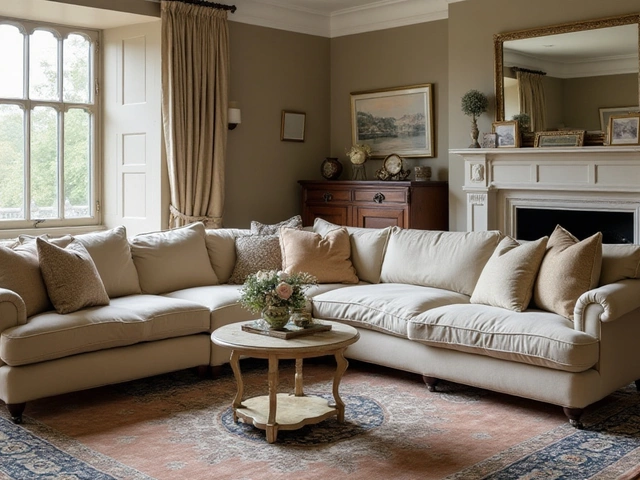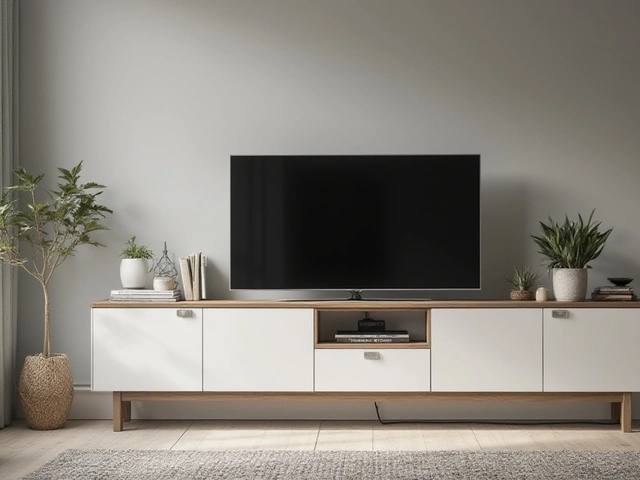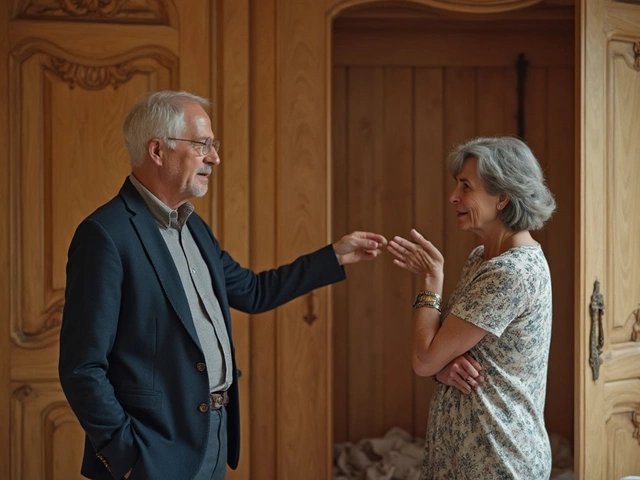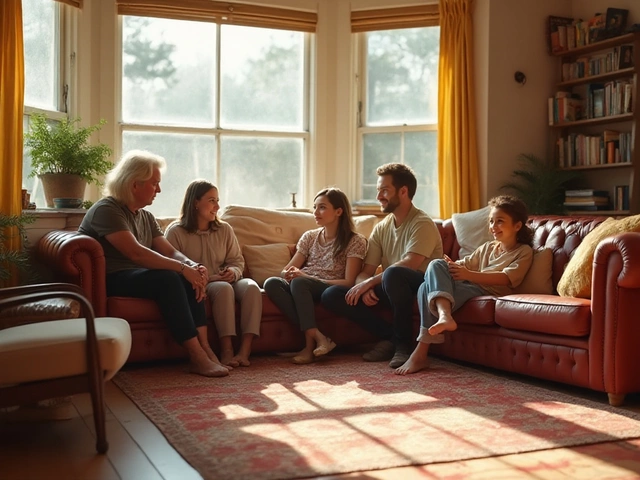 8
Nov,2025
8
Nov,2025
Bookshelf Styling Calculator
Input Your Bookshelf
Recommended Arrangement
Based on article principlesEmpty Space Required: 40%
Total Items per Shelf: 3-5 (books + objects)
Recommended Object Count: 1 per shelf
Key Tip: Group in odd numbers
Pro Tip: Place one focal object (e.g., ceramic vase) at the center of each shelf, with books grouped in threes on either side.
There’s a difference between a bookshelf that holds books and one that feels like part of the room’s soul. A classy bookshelf doesn’t just store books-it tells a story. It doesn’t shout for attention, but it holds it. And no, you don’t need to spend thousands or buy a designer piece to get there. It’s about how you arrange what’s already there.
Start with the structure
Your bookshelf’s shape matters more than you think. A solid wood shelf with clean lines-like oak, walnut, or even stained pine-gives instant weight. Avoid flimsy particleboard with plastic veneers. They look cheap no matter how you style them. If your shelf is already built-in or cheap, don’t replace it. Paint it. A matte black, deep navy, or warm white finish can transform it overnight. Sand lightly first, use primer, then two thin coats. Let it dry properly. That’s it. You’ve upgraded the base.
Less is more, but not empty
Classy doesn’t mean sparse. It means intentional. A shelf crammed with every book you’ve ever owned looks like a storage closet. A shelf with only three books looks like you forgot to decorate. The sweet spot? Leave 40% of the space open. That’s not a rule-it’s a rhythm. It gives your eye room to rest. Group books in threes or fives. Stack some horizontally, stand others upright. Mix sizes. Don’t line them up by color unless you’re going for a museum look. That’s not classy-it’s predictable.
Use objects to break the pattern
Books are the foundation, but they’re not the whole show. Place one or two sculptural objects on the shelf. A ceramic vase with a single dried stem. A small brass candle holder. A vintage camera. A stone paperweight from a trip. These don’t have to be expensive. They just need to feel personal. Avoid plastic figurines, cheap souvenirs, or anything that looks like it came from a tourist shop. If you wouldn’t display it on your coffee table, don’t put it on the bookshelf.
Here’s what works: a single framed black-and-white photo. A small plant in a concrete pot. A stack of three art books with the covers facing out. One object per shelf level is enough. More than that, and it becomes clutter.
Color and texture matter more than you think
Books come in all colors. But a rainbow of spines can feel chaotic. Instead, group books by tone. Keep dark tones together-navy, charcoal, deep green. Then add a few with cream or gold accents. Let one or two bright covers peek through, like a red spine or a mustard-yellow cover. It’s like adding a single bold lipstick to a neutral outfit. It draws the eye, but doesn’t overwhelm.
Texture is your secret weapon. A woven basket holding magazines. A linen book cover. A wooden box with carved details. These add depth. A glass-fronted bookshelf? Even better. It lets light play through, and you can tuck a small LED strip behind the top shelf for a soft glow. No one needs bright lights on a bookshelf. But a whisper of ambient light? That’s luxury.
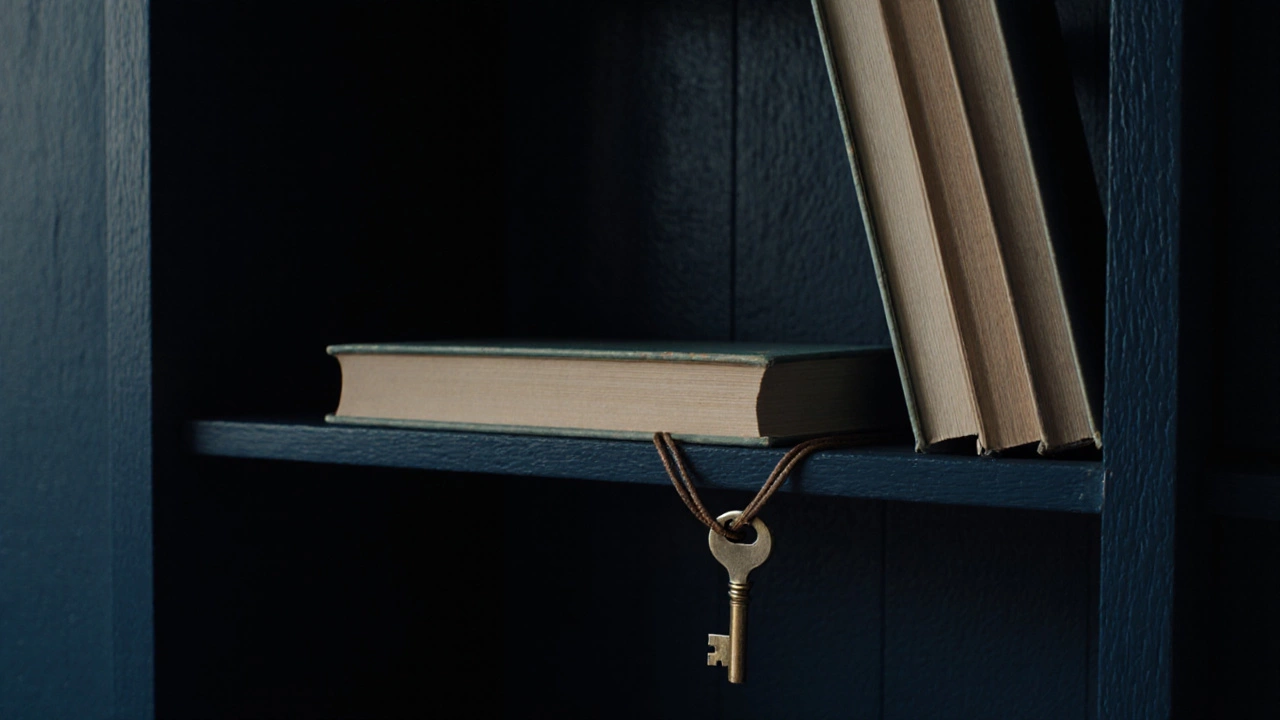
Let the shelf breathe with space
Classy spaces have silence. That means leaving gaps. Don’t fill every inch. Leave space between groups of books. Leave space above and below objects. A shelf that’s too full looks like it’s trying too hard. A shelf with breathing room looks confident. Think of it like a well-tailored suit-it doesn’t cling. It drapes. It moves with you.
If you’re unsure, step back. Take a photo with your phone. Look at it in grayscale. If everything blends into one gray blob, you’ve got too much going on. If you can trace your eye along a clear path-from a vase, to a book stack, to a small sculpture-you’re on track.
Lighting makes the difference
Lighting is the invisible hand that turns a shelf into a statement. A single small wall sconce angled toward the shelf does more than a dozen decorative trinkets. If you can’t install a sconce, try a slim LED strip behind the top edge. It’s invisible during the day, but at night, it casts a soft halo on the books below. No harsh bulbs. No desk lamps. Just gentle, upward light. It makes the wood glow and the spines feel richer.
And don’t forget natural light. Position your bookshelf where morning or afternoon sun touches it lightly. Dust gathers faster, sure. But the way sunlight hits a wooden shelf and warms the spines of books? That’s the kind of beauty you can’t buy.
Keep it curated, not collected
Classy bookshelves are edited. That means you need to be ruthless. Every year, take a weekend and go through it. Ask: Does this book still matter to me? Does this object still bring me joy? If the answer’s no, put it in a box. Store it. Donate it. Don’t keep it just because you might need it someday. That’s hoarding, not styling.
Replace what you remove with something new-maybe a small sculpture you found at a local market, or a book you just fell in love with. The shelf should evolve with you. It’s not a museum. It’s a living space.
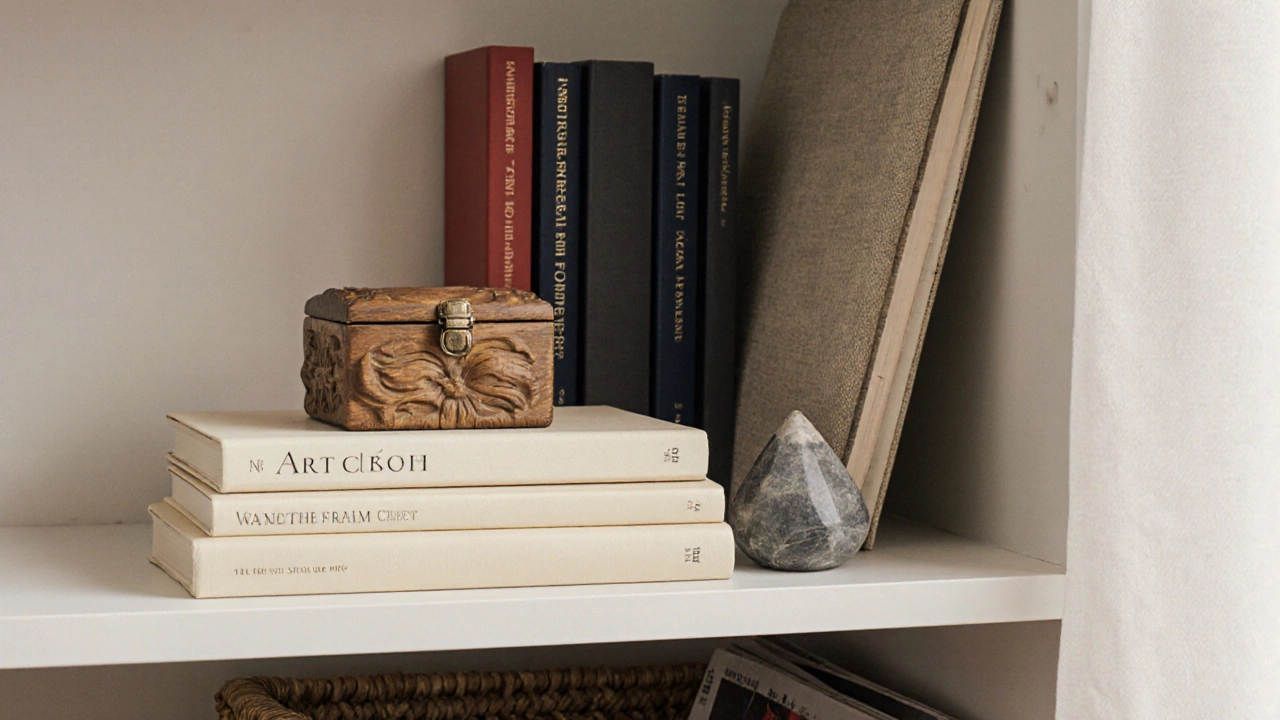
What to avoid at all costs
- Plastic bookends with logos
- Stacks of unread self-help books as decoration
- Too many matching decorative boxes (they look like storage, not style)
- Overused items: cacti in terracotta pots, framed quotes, wind chimes
- Color-coordinating every single book spine
These things aren’t wrong. They’re just tired. They’ve been done too often, too poorly. Classy is quiet. It’s subtle. It’s the thing you notice after you’ve been in the room for five minutes.
Real examples that work
In a Melbourne apartment, a walnut bookshelf holds mostly novels and art books. One shelf has a small bronze owl sculpture, a stack of three leather-bound journals, and a single ceramic bowl holding dried eucalyptus. Another shelf holds a vintage globe, a stack of photography books, and a small framed photo of a coastal walk. No matching items. No symmetry. Just balance.
Another example: a narrow shelf in a hallway. Only three books, one on its side, one upright, one tilted. A single brass key on a leather cord hangs from the front edge. That’s it. It catches the light. People stop and look. No one knows why. But it feels right.
Final thought: It’s about the feeling, not the stuff
A classy bookshelf isn’t about having the most books, the most expensive objects, or the fanciest wood. It’s about the quiet confidence of things that belong together. It’s the space between objects. The way light falls. The weight of a well-loved book. The silence after you’ve taken a moment to just look.
You don’t need to buy anything new. You just need to pause. Rearrange. Remove. And let the shelf become more than storage. Let it become a quiet corner of your life that says something true.
Can I make a cheap bookshelf look classy?
Yes. Paint it in a matte finish like charcoal, deep green, or warm white. Sand it lightly first, then use primer and two thin coats. Add texture with woven baskets, ceramic objects, or leather-bound books. Avoid plastic decor. Focus on spacing and lighting. A $50 shelf can look like a $1,000 one if styled with intention.
How many items should I put on each shelf?
Aim for three to five items per shelf, including books and objects. Leave 40% of the space empty. Group items in odd numbers-three books, one vase, two small objects. Avoid filling every inch. Empty space lets the eye rest and makes each item feel more intentional.
Should I organize books by color?
Only if it feels natural to you. Most classy bookshelves group books by size, subject, or personal meaning-not color. A single splash of color, like a red or gold spine among neutrals, adds interest. But matching every spine is predictable, not elegant. Let some books stand out.
What lighting works best for a bookshelf?
Soft, upward light is ideal. Install a slim LED strip behind the top edge of the shelf, or use a small wall sconce angled toward it. Avoid overhead or direct lighting-it creates harsh shadows. Natural light is also powerful; position the shelf where morning or late afternoon sun touches it gently.
How often should I update my bookshelf?
Once a year is enough. Take a weekend to remove books or objects you no longer connect with. Replace them with something new-a book you just loved, a small object from a trip, or a piece of art you bought on impulse. A bookshelf should grow with you, not stay frozen in time.
